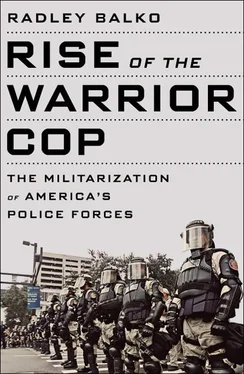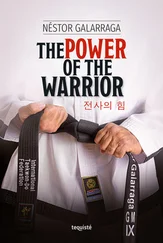The other voice for reform came from administrators within the law enforcement community. They too wanted to free police departments from the political machines, but they focused less on ideology and more on fighting crime. They wanted to give more freedom and autonomy to police chiefs, who were often held responsible for the actions of their officers but had very little power to actually change their behavior.
In the end, the administrators won the long-term debate by embracing the concept of professionalism . Through the adoption of best practices, they successfully transformed the job of police officer from a perk of patronage to a formal profession with its own standards, specialized knowledge, and higher personnel standards and entry requirements. To be a police officer was no longer just a job, it was a career. The first thirty or so years of the twentieth century saw the formation of professional societies like the Police Chiefs’ Union; the sharing of knowledge and “police sciences” like fingerprinting; and the creation of specialized “squads” to tackle specific problems like alcohol, prostitution, and gambling.
The champion of the professionalism movement was August Vollmer, who served as chief of police in Berkeley, California, from 1905 to 1932. Vollmer pioneered the use of police radios, squad cars, bicycles, lie detector tests, and crime labs. As Walker writes, “The professionalism movement created the modern police organization: a centralized, authoritarian, bureaucracy focusing on crime control.” 2
But the morals-oriented progressives also had some victories, at least in the short term. They succeeded in passing anti-obscenity laws, and in some cities (most notably New York) they were able to put shutting down brothels, adult-book stores, and other sex-related businesses high on the list of police priorities. Their biggest victory was of course the Eighteenth Amendment, which banned the production, sale, and importation of alcohol.
The amendment was enforced by the Volstead Act, passed in 1919. The prohibition of alcohol has some clear parallels with the modern drug war. Homicides spiked during Prohibition, as did public corruption. The federal government had created a lucrative new black market. In legal markets, businesses compete by providing a better product, a less expensive product, or better customer service. In black markets, they compete by warring over turf. Disputes are settled with guns, not in courtrooms. As the bootleggers obtained bigger guns to war with one another, law enforcement agencies felt that they needed bigger guns to go after the criminals. In larger cities, the ensuing arms race produced heavily armed police forces.
Like today’s drug prohibition, the Volstead Act was a failure. It almost certainly reduced the amount of alcohol the country consumed, but it came nowhere near stamping out booze entirely. The true believers responded by calling for tougher crackdowns and less coddling of bootleggers and drinkers. In his book The Spirits of America , journalist Eric Burns writes that some politicians and civic leaders suggested sending drunks and booze distributors to Siberia or the South Pole. Burns notes that David Blair, the federal commissioner of internal revenue at the time, “recommended that all American bootleggers be lined up in front of a firing squad and shot to death.” 3Foreshadowing the cries the country would hear from drug warriors sixty years later, Henry Ford wanted the military to enforce the laws against illicit substances. Anti-alcohol activist Clarence True Wilson demanded that the Harding administration call up the Marines, “arm them to the teeth and send them to the speakeasies. Give the people inside a few minutes to depart, and if they chose not to, open fire anyhow.” 4
But as hard as the temperance activists tried, they couldn’t demonize and dehumanize drinkers the way drug warriors have since succeeded in denigrating drug offenders. One likely reason was that the Volstead Act didn’t criminalize the possession or consumption of alcohol, only its production and sale. So the feds could raid speakeasies, but they couldn’t raid a home based on a tip that someone had a cupboard full of gin—unless they suspected there was a distillery inside. Since simply ingesting alcohol was not a criminal act, it was more difficult for Prohibition’s supporters to cast drinkers as villains. The country was also more federalist in the 1920s. Even after the Eighteenth Amendment passed, some states, cities, and counties simply refused to enforce it.
After the repeal of Prohibition in 1933, the professionalism model returned to police departments.
Although some of the aims of professionalism may have been noble, the story of early American policing is one of overcorrection. While the professionalism reformers were able to end the patronage system, in some cities they managed to insulate police departments from politics altogether, making it difficult for mayors and city councils to hold police officials accountable. At the level of individual cops, the use of squad cars and radios clearly brought a lot of benefits, but could also isolate police officers from the residents of the communities they patrolled. Cops out walking beats could chat with citizens, form relationships, and become a part of the community. Squad cars gave cops a faceless and intimidating presence. They tended not to get out of them except in the event of problems or confrontations. Police and citizens interacted only when police were ticketing or questioning someone, or when a citizen was reporting a crime. In poorer communities, that could bring about an increasingly antagonistic relationship between cops and the citizens on their beats. 5
Perhaps no police chief better illustrated that double-edged sword of professionalism than William Parker in Los Angeles. Parker took over the LAPD in 1950 and imposed a rigid, hierarchical, militaristic bureaucracy. He took on corruption in the department—successfully—and stressed efficiency and crime fighting above all else. Parker had also worked in public relations for the military for a time, and he used that experience to sell his ideas about policing to the public. He helped create the show Dragnet , a virtual commercial for Parker-style police management—or at least an idealized form of it. 6
But Parker also loathed community policing, the idea that cops should have a stake in the communities they served. He preferred to have a wall between cop and community. That sentiment probably stemmed from the goal of ridding the department of the sort of localized interests that existed in the patronage era. But completely walling off cops from their communities presented its own problems. Making cops indifferent to the areas they patrolled, instilling in them the notion that they were all that stood between order and anarchy—all of this could make police view the citizens in their districts as at best the other , and at worst, the enemy. Consequently, while Parker’s management rid the LAPD of political patronage and corruption, and instilled some needed structure and standards, he seemed oblivious to growing animosity toward police in the city’s black and Latino populations.
Parker’s efforts at instilling professionalism provide a good segue into the age of militarization for a couple of reasons. For one, as we’ll see, when the racial tension in LA finally blew up in the form of the Watts riots, it went a long way toward scaring middle America about crime, to the point where they were willing to embrace an all-out “war” on crime and drugs to clean up the cities.
But Parker also had a much more direct impact on militarization. Shortly after taking office, the chief made a young LAPD cop barely a year into the job his personal chauffeur, and eventually his protégé. That set the young cop’s career on a fast track. By the time of the Watts riots in 1965, Parker’s young protégé would take command of the city police department’s response. The experience would scar him. The protégé would eventually become LA’s police chief himself. And in large part because of his experience in Watts, he did more to bring about today’s militarized American police force than any other single person. His name was Daryl Gates.
Читать дальше












